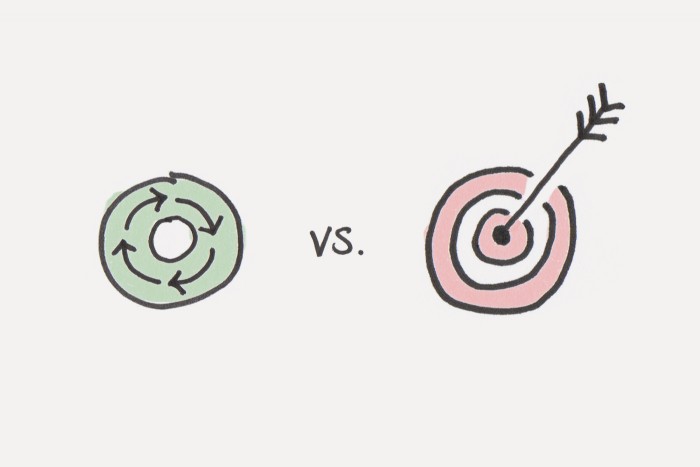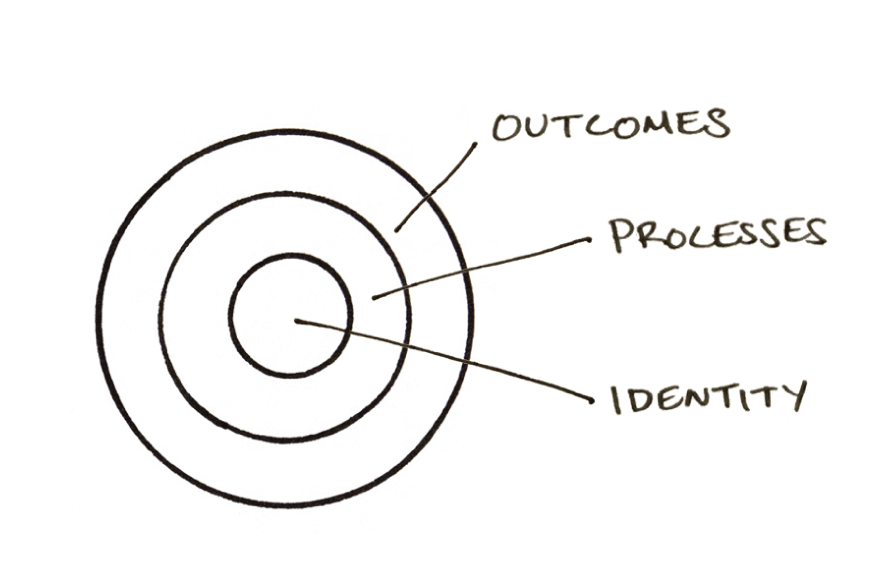Welcome to this post on 10 key takeaways from “Atomic Habits!”
I recently read the book, “Atomic Habits,” by James Clear. It was such a wonderful book that gave me wonderful insight on how we can adopt habits that actually stick.
As teenagers, it can be hard for us to stick to habits because of not only distractions, but also our excuses. This is something that I’ve been struggling with the past few months, and I wanted to make a change. I wanted to start the habit of journaling, but my mind would keep saying, “it’s useless” or “I don’t have the time for it.” However, I really wanted to get started on journaling and reflecting on my days and weeks.
With the excuses I made up, I didn’t even start journaling and I don’t have any record of me journalling ever. I realized that this procrastination (or whatever you want to call it) is something I did not want to continue.
I’ve heard a lot of good reviews about the book and I bought it off of Amazon (link in conclusion.)
After it arrived, I set one day for me to read it and take notes. That day was a game-changer.
I learned so many valuable insights about habits and directions on how to stick to them, and I can’t wait to share it with you guys. This book is such an AMAZING book and it gives you clear advice on what steps to take.
I absolutely loved this book, so I wanted to share my top 10 takeaways from this book with you guys. So, without further ado, here they are!
1. Systems > Goals

You do not rise to the level of your goals. You fall to the level of your systems.
The first takeaway from Atomic Habits is that systems beat goals. This is because no matter how high of a goal you set, you won’t be able to accomplish it without a functioning system.
When your eyes are on the goal, you begin to miss all the small, little details that push you towards those goals. On the other hand, if you are focused on the small details that come together to create a system, you will build the systems and processes that are essential to achieving these goals.
One quote that really stuck to me is:
If successful and unsuccessful people share the same goal, then goal can’t be what differentiates the winner from loser!
Many people in the world have similar goals – like becoming financially independent by a certain age. But, not all people can achieve that, despite sharing the same vision. That’s where systems come into play.
The purpose of a goal is to win the game, but the purpose of a system is to continue playing the game!
2. To change habits, change how you identify yourself

No single instance will transform your beliefs, but as the votes build up, so does the evidence of your new identity.
If you want to change your habits, you must also modify your identity. No, not by changing your whole perspective of who you are, but by adjusting a small portion of what you believe.
Here is one example that hopefully doesn’t apply to you:
Say you are a smoker and someone offers you a cigarette. You say, “No thanks. I’m trying to quit.” As written by James Clear, this sounds like a reasonable response but you still believe that you are a smoker who is trying to be someone else.
Imagine you said, “No thanks. I’m not a smoker.” This small change in the statement makes a shift in your identity and makes you believe that you are not a smoker.
Your habits align with your identity, so the more you believe that you are like something, the more you will adapt and change habits to align with that person you believe you are.
3. Strive to get 1% better each day

Getting 1 percent better every day counts for a lot in the long run.
After reading this book, I immediately made it a goal to get 1% each day. Here’s what convinced me:
If you get 1% better each day, you’ll be nearly 37 times better after one year. On the other hand, if you get 1% worse each day, you’ll be close to 0 after a year.
1% is a very minimal portion, but the impact it has in the long-term is mind-blowing. You won’t be able to notice the difference after a day, a week, or even a month, but you will begin to see significant improvements after several months.
The same reason that supports the fact that if you go to the gym 3 days in a row, you still won’t have the perfect body you want is the same reason that also makes it easy to let a bad habit slide.
However, the thing with habits is that compounds like money does. So, always be sure to make sure you’re going exponentially up instead of down.
4. Bundle an action you want to do with an action you need to do
Temptation bundling is one way to make your habits more attractive. The strategy is to pair an action you want to do with an action you need to do.
In simple terms, bundling an action you want to do with an action you need to do is habit stacking. And, habit stacking is a very effective strategy in building good habits. It goes with this method created by BJ Fogg:
“After I {Current Habit}, I will {New Habit}.”
Some examples that come from the book are:
- Exercise: After I come home from school, I will immediately change into my workout clothes.
- Meditate: After I eat breakfast, I will meditate for one minute.
- Gratitude: After I eat dinner I will say one thing I’m grateful for that happened today.
These are just examples of habits you can mix in to your already determined routine. It is up to for what habits you want to add and when you want to do it!
5. Consistency beats perfection

If you want to master a habit, the key is to start with repetition, not perfection. You don’t need to map out every feature of a new habit. You just need to practice it. This is the first takeaway of the 3rd Law: you just need to get your reps in.
The reason why consistency beats perfection is that perfection is simply not possible.
Life will inevitably interrupt you at some point, and whenever that happens to you, just go by the rule pointed in the last takeaway: never miss twice.
I like to use exercising as an example. There will be days where you’ll have a bad workout. But, you will never ever regret doing that “bad” workout.
6. Start small

All big things come from small beginnings. The seed of every habit is a single, tiny decision.
A way to build your habits and also your productivity is to start small. I use this in my everyday life and it is a game-changer.
For example, if I have to write a whole blog, I’ll tell myself to just start writing one sentence of an introduction. After I write one sentence, I’ll have the momentum I need to keep going and finish the introduction.
7. Change your environment to build good habits

You can imagine how important it is to live and work in environments that are filled with productive cues and devoid of unproductive ones.
In the section where James Clear talked about environment, the title of the chapter was “Motivation is Overrated: Environment Often Matters More.”
When you have visual cues right in front of you, you are making it easier for you to make a better decision.
For example, if you want to drink more water, you can fill up a few water bottles and place them around your house.
8. Get an accountability partner

Knowing that someone else is watching you can be a powerful motivator.
If you want to start building a new habit/routine, do it with a friend, family member, or anyone else you want. This will help you stay consistent and go after your goal. If you care about what others think about you, you wouldn’t want someone to have a lesser opinion about you.
Along with this, it’s also fun to do things with other people. It not only motivates you, but helps you enjoy the ride as well!
9. Reduce friction for good habits and increase friction for bad habits
Much of the battle of building better habits comes down to finding ways to reduce the friction associated with our good habits and increase the friction associated with our bad ones.
A great strategy to make good habits inevitable is to create a commitment device and automate your habits. This is reducing friction for good habits so that you are more likely to do it.
For example, if you come home from school and want to workout, you may end up not working out because you first have to change into your workout clothes, grab your shoes, and whatever else you want to do. However, if before going to school, you put your clothes on your bed and shoes right beside the door, you’ll already have it laid out for you. This way, you can get right to it instead of thinking that you have to do extra steps.
10. Never miss a habit twice in a row
Never miss twice.
This is something that Jacob has also implemented in his productivity system, so be sure to read his blogs.
If you’re trying to build a habit and stay consistent but miss one day, it’s okay. All you have to do is get back into it the next day. If you miss one workout, just be sure to do it the next day. If you miss one alarm, don’t snooze it the next day.
“Missing once is an accident. Missing twice is the start of a new habit.”
Skipping one time won’t ruin the habit, but continuing to miss it will.
The 4 steps to creating good habits and removing bad habits:
![Atomic Habits by James Clear: Summary and Book Review [PDF]](https://radreads.co/wp-content/uploads/2019/02/Atomic-habits-4-laws.png)
The (Final Takeaway)
As a recap, here are my 10 takeaways from James Clear’s Atomic Habits:
- Systems > Goals
- To change habits, change how you identify yourself
- Strive to get 1% better each day
- Bundle an action you want to do with an action you need to do
- Consistency beats perfection
- . Start small
- Change your environment to build good habits
- Get an accountability partner
- Reduce friction for good habits and increase friction for bad habits
- Never miss a habit twice in a row
These are just 10 of the wonderful pieces of advice James Clear gives in this mind-blowing book.
No matter where you are in your success journey, Atomic Habits is a must-read. The guidance given in this book is sure to transform your life for the better, and I can’t wait to see that happen with me.
To buy the book, “Atomic Habits: An Easy & Proven Way to Build Good Habits & Break Bad Ones” from Amazon (which I highly recommend you do), click here.
To check out the author’s, James Clear’s website, and read his articles, click this link! In his website and articles, James Clear expands on some of the tips he wrote and even gives examples of his own for his readers to better understand it. So, be sure to check it out whenever you have time.
Last but not least, Jacob has used several of James Clear’s advice in his productivity system. Be sure to check out Jacob’s blog on everything I’ve learned about productivity in my 18 years of life!
After reading this book, I felt super motivated to start adopting new habits and improve my lifestyle. Now, it’s time for me to use Clear’s advice in my own life and see how far it takes me!
I hope that this blog inspired you to read Atomic Habits for yourself and learn how to not only adopt and follow through on your habits, but improve your lifestyle and take you to closer to success!
Thanks for reading and if you have any questions or comments about the book, feel free to type below in the comments!
